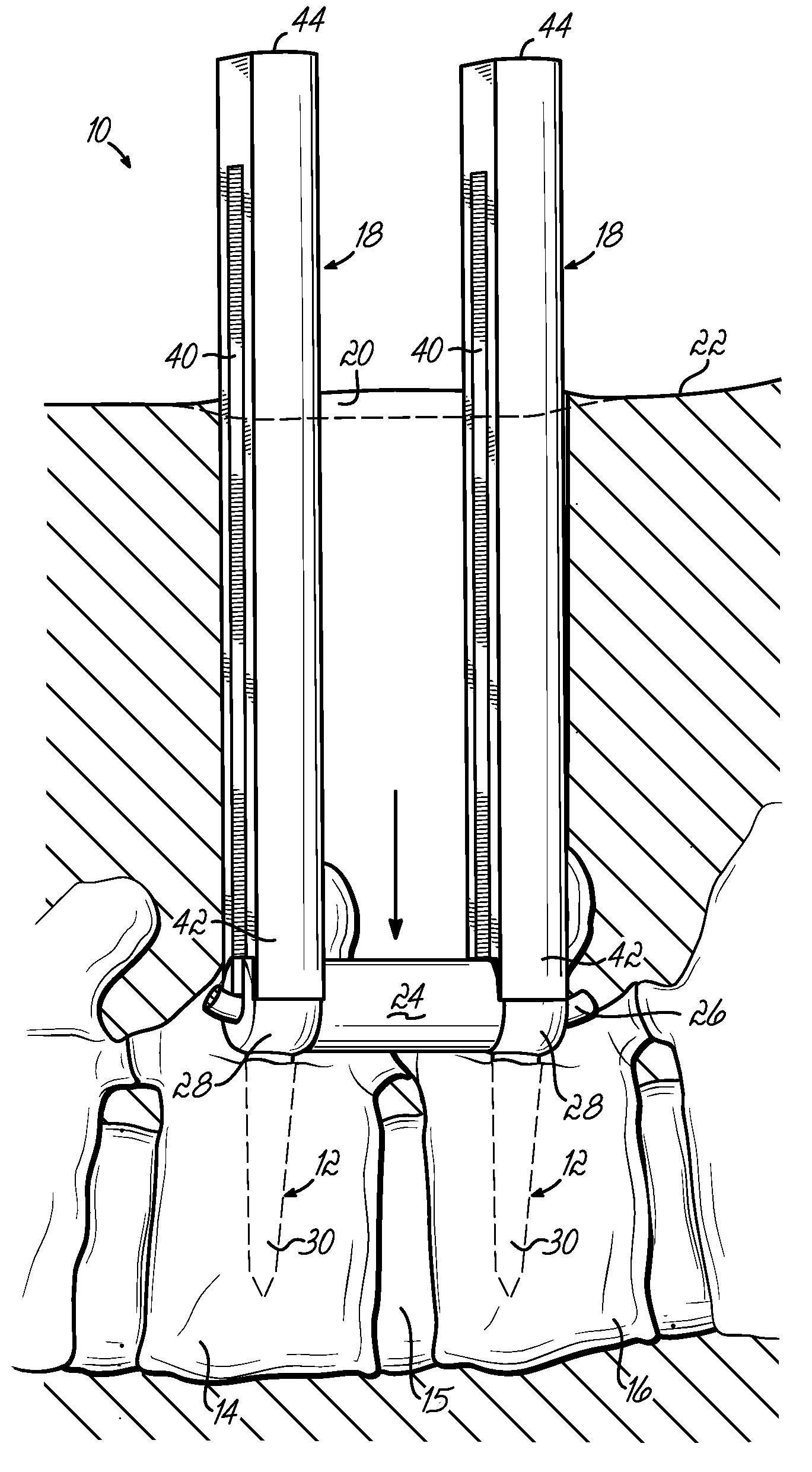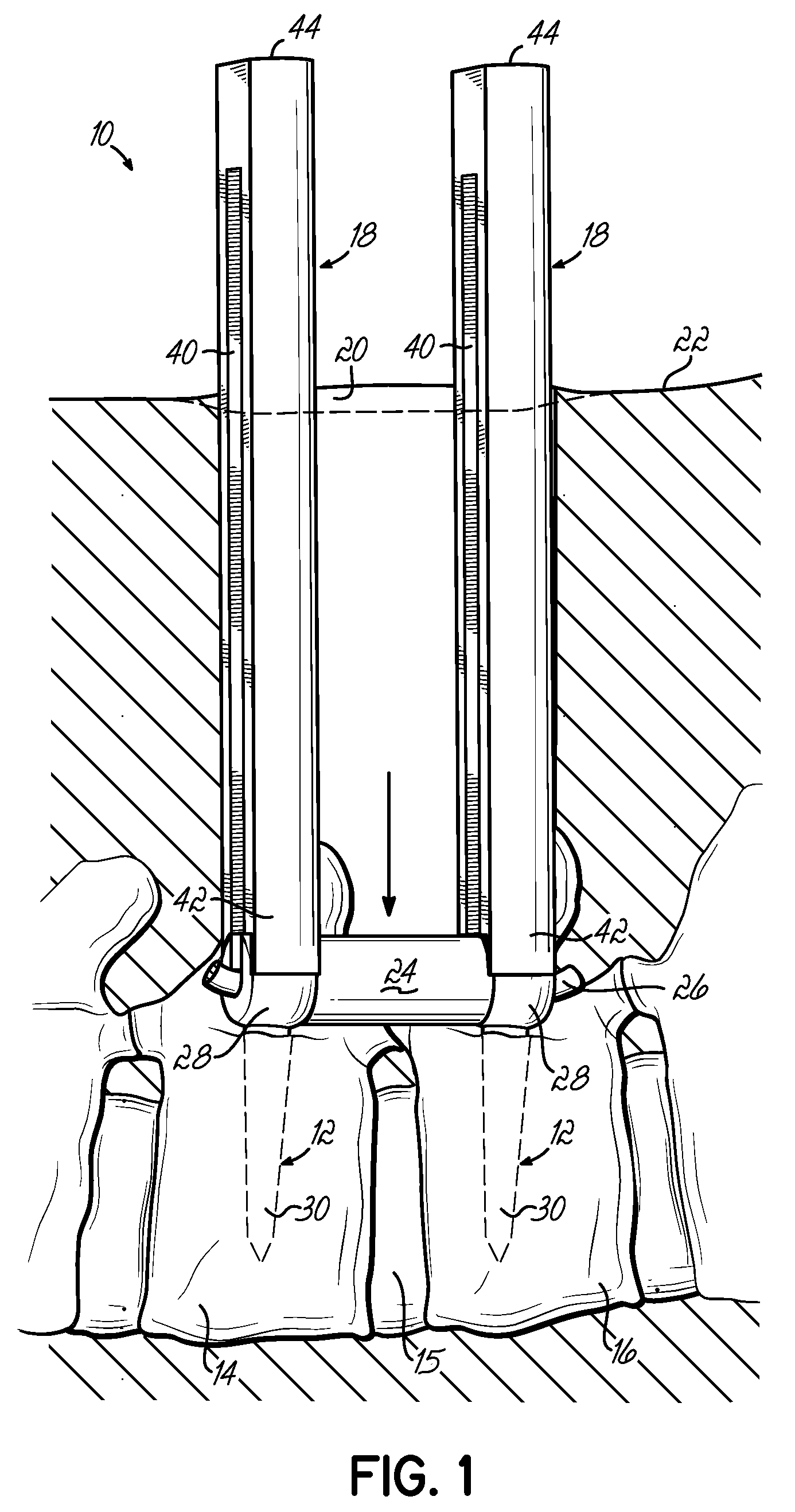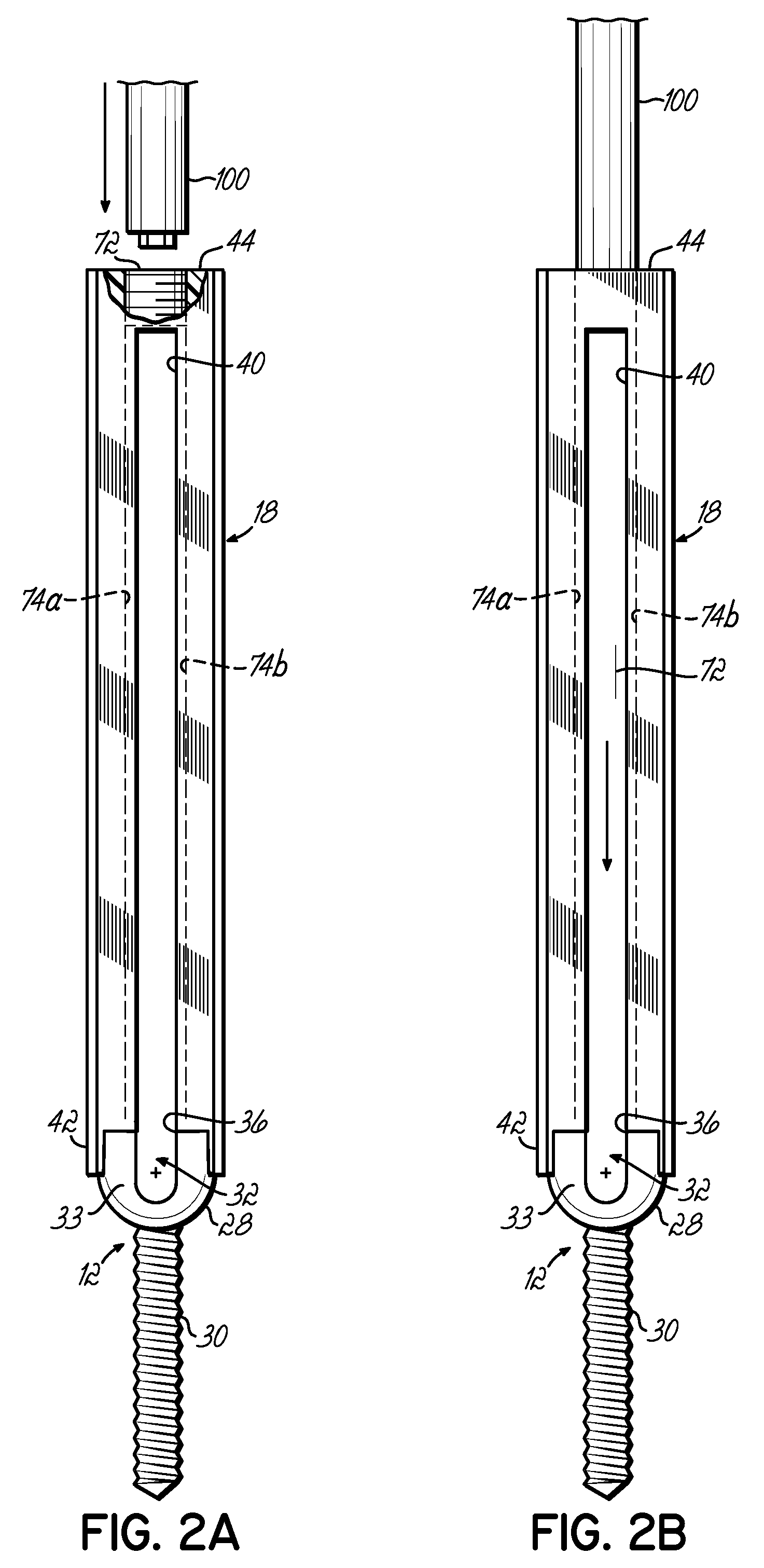Spinal stabilization system with flexible guides
a technology of flexible guides and stabilization systems, which is applied in the field of spine support devices, can solve the problems of difficult positioning of the spacer between the guide rods, relative large surgical sites, and large surgical sites
- Summary
- Abstract
- Description
- Claims
- Application Information
AI Technical Summary
Benefits of technology
Problems solved by technology
Method used
Image
Examples
Embodiment Construction
[0026]FIG. 1 depicts a portion of a human spine, with adjacent vertebrae 14, 16 separated by a disc 15. FIG. 1 also illustrates one embodiment of a spinal stabilization system 10 comprising anchors 12 installed into adjacent vertebrae 14, 16 of the spine using flexible, removable guides 18 inserted through a minimally invasive incision 20 formed through the patient's skin 22. In the embodiment shown, at least two anchors 12, shown here in the form of pedicle screws, are fixedly installed into the pedicle area of adjacent vertebrae 14, 16 and a flexible spacer 24 is disposed therebetween to control abnormal motion of the spine, while otherwise leaving the spinal segment mobile. The spacer 24 and pedicle screws 12 are coupled together by a flexible cord 26 threaded through the spacer 24 and secured to the heads 28 of the screws 12. Such spacers 24 and cords 26 may be similar to those used in the Dynesys® Dynamic Stabilization System available from Zimmer, Inc. of Warsaw, Ind. In one e...
PUM
 Login to View More
Login to View More Abstract
Description
Claims
Application Information
 Login to View More
Login to View More - R&D
- Intellectual Property
- Life Sciences
- Materials
- Tech Scout
- Unparalleled Data Quality
- Higher Quality Content
- 60% Fewer Hallucinations
Browse by: Latest US Patents, China's latest patents, Technical Efficacy Thesaurus, Application Domain, Technology Topic, Popular Technical Reports.
© 2025 PatSnap. All rights reserved.Legal|Privacy policy|Modern Slavery Act Transparency Statement|Sitemap|About US| Contact US: help@patsnap.com



